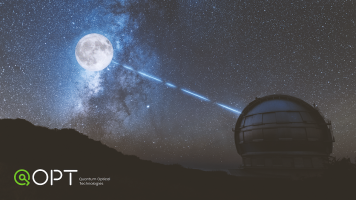Instruments used in future deep-space missions will collect massive amounts of data from other planets of the solar system and beyond. The bottleneck is downlink transfer of these data back to Earth. A shift from radio-frequency to the optical band gives access much higher bandwidths and reduces diffraction losses. Under power constraints imposed on onboard transmitters and restricted apertures of receiver antennas this implies strongly photon-starved regime, where the typical signal power spectral density is much less than the energy of a single photon at the carrier frequency per unit time-bandwidth area. The current standard for photon-starved communication is high-order PPM combined with a photon counting direct detection (DD) receiver. However, such an arrangement does not attain the quantum limit on the communication capacity [JLT 38, 2741 (2020)] and poses a number of technical challenges, such as the electrical-to-optical power conversion efficiency of onboard transmitters. Current progress in quantum information science and photonic technologies provides strong motivation to investigate the usefulness of these advances to boost the throughput of photon-starved communication links, in particular those based on the PPM format which has become current standard. Examples of novel approaches include quantum receivers capable of reducing error rates down to the Helstrom limit, selective noise rejection mechanisms based on nonlinear optical interactions, as well as joint detection of multiple symbols benefiting from the so-called superadditivity of accessible information. The central focus of the proposed activity is to study the feasibility of these approaches taking into account variable transmission conditions for the optical signal, noise contributions, and imperfections of optical components and subsystems.

